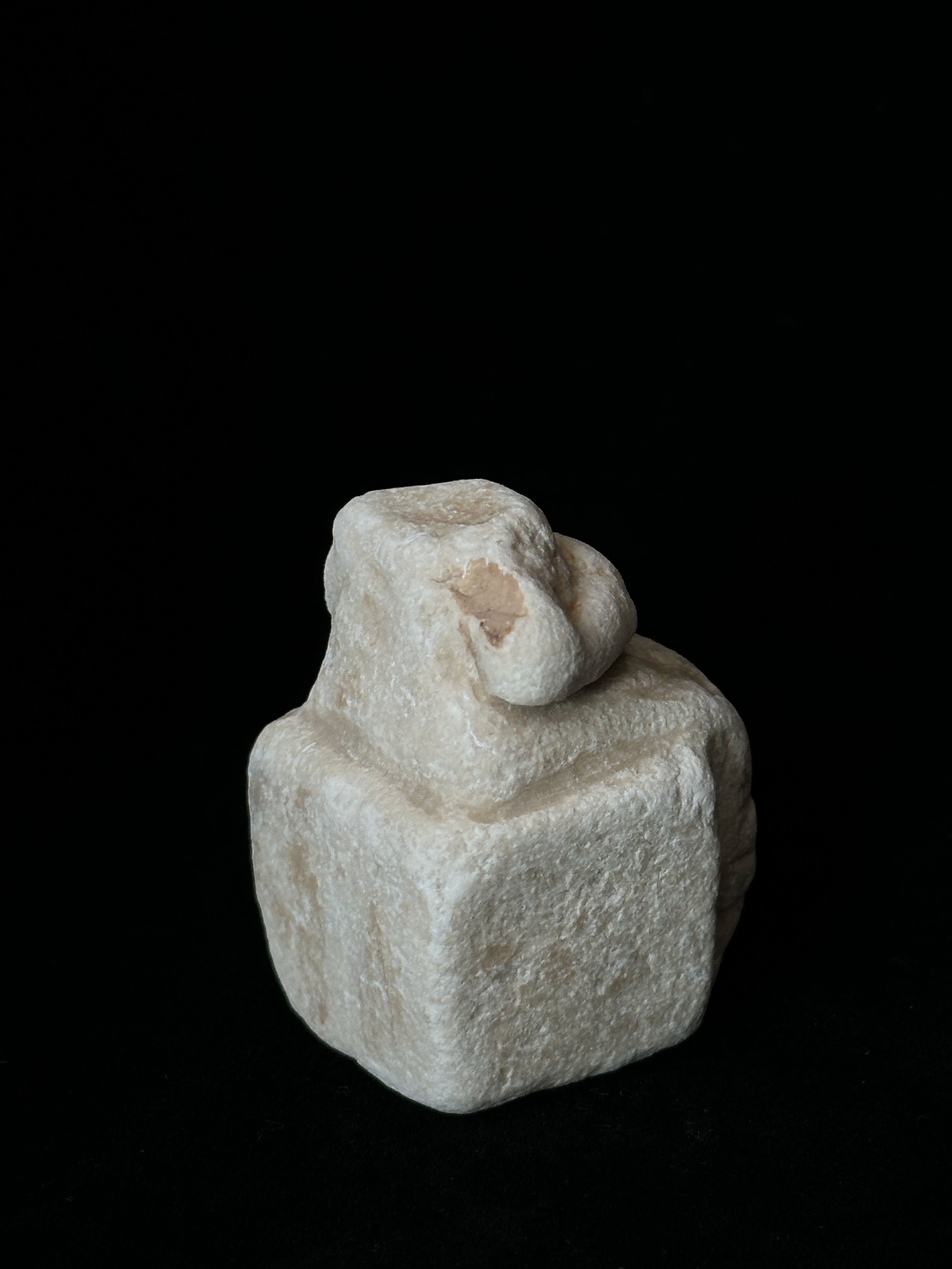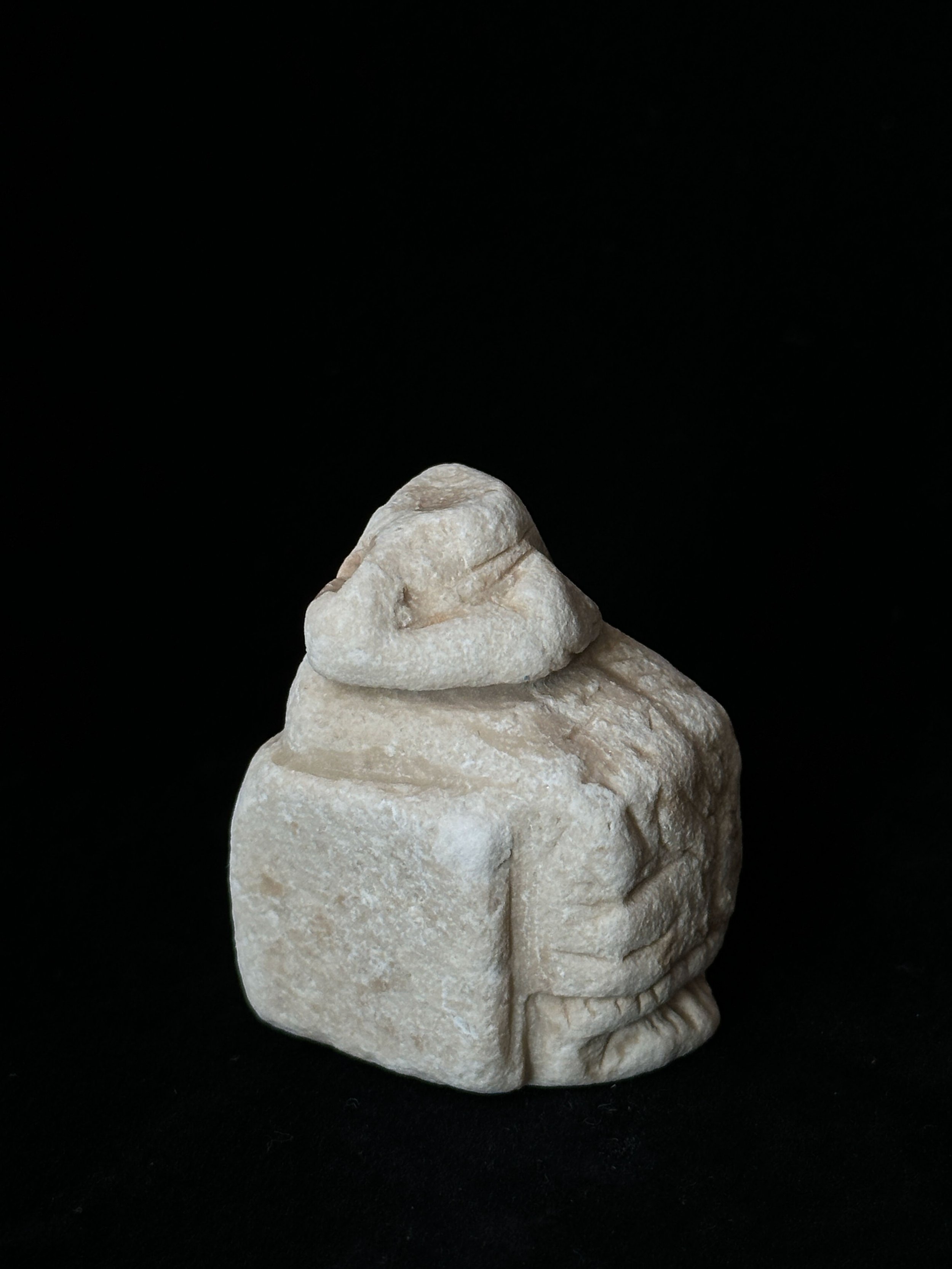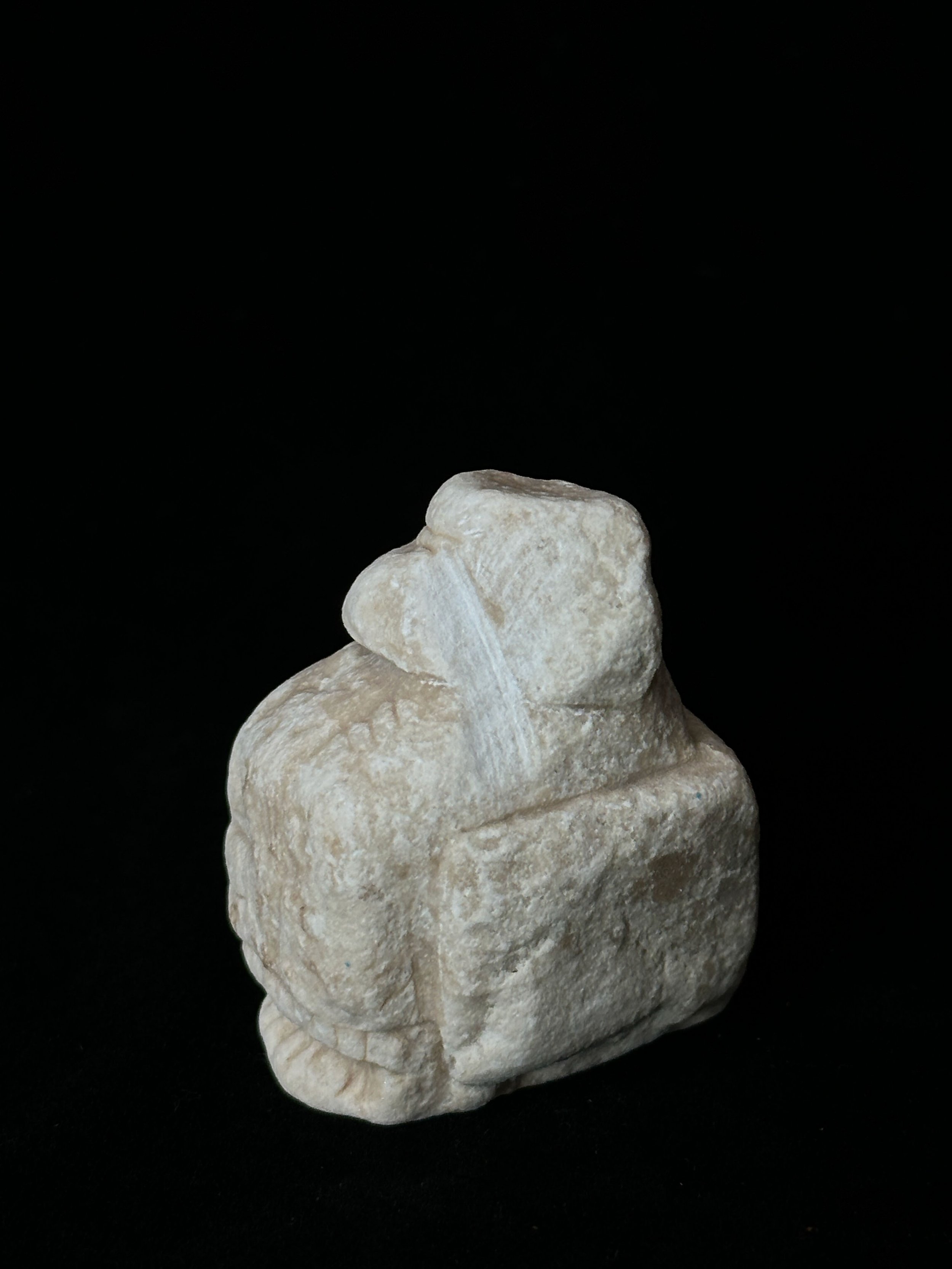 Image 1 of 7
Image 1 of 7

 Image 2 of 7
Image 2 of 7

 Image 3 of 7
Image 3 of 7

 Image 4 of 7
Image 4 of 7

 Image 5 of 7
Image 5 of 7

 Image 6 of 7
Image 6 of 7

 Image 7 of 7
Image 7 of 7








UNEARTHED Ancient Egyptian Marble Fragment of Seated Figure
Egypt (Possibly Late Period to Ptolemaic), c. 664–30 BCE
Carved marble
Approx. 2×1.5” / 3.5×5×3.5 cm
Carved from dense marble with a softened, time-worn surface, this sculptural fragment is likely the base of a seated figure—perhaps once part of a votive statue or private tomb offering. The cross-legged pose, deeply cut pleats along the lower edge, and the compact, squarish volume suggest a figure in meditation or writing, calling to mind small scribe statues or devotional representations meant to accompany the deceased.
The material itself—stone cold to the touch, with fine veining and a quiet luminosity—points toward true marble rather than alabaster. While rarer in Egyptian contexts, marble was occasionally used for elite commissions, particularly during the Late Period and into the Ptolemaic era, when foreign materials and forms entered the Egyptian lexicon through trade and conquest.
This is a modest but powerful object—weathered into near-abstraction, but still unmistakably human in gesture. A memory of form preserved in stone.
Egypt (Possibly Late Period to Ptolemaic), c. 664–30 BCE
Carved marble
Approx. 2×1.5” / 3.5×5×3.5 cm
Carved from dense marble with a softened, time-worn surface, this sculptural fragment is likely the base of a seated figure—perhaps once part of a votive statue or private tomb offering. The cross-legged pose, deeply cut pleats along the lower edge, and the compact, squarish volume suggest a figure in meditation or writing, calling to mind small scribe statues or devotional representations meant to accompany the deceased.
The material itself—stone cold to the touch, with fine veining and a quiet luminosity—points toward true marble rather than alabaster. While rarer in Egyptian contexts, marble was occasionally used for elite commissions, particularly during the Late Period and into the Ptolemaic era, when foreign materials and forms entered the Egyptian lexicon through trade and conquest.
This is a modest but powerful object—weathered into near-abstraction, but still unmistakably human in gesture. A memory of form preserved in stone.
Egypt (Possibly Late Period to Ptolemaic), c. 664–30 BCE
Carved marble
Approx. 2×1.5” / 3.5×5×3.5 cm
Carved from dense marble with a softened, time-worn surface, this sculptural fragment is likely the base of a seated figure—perhaps once part of a votive statue or private tomb offering. The cross-legged pose, deeply cut pleats along the lower edge, and the compact, squarish volume suggest a figure in meditation or writing, calling to mind small scribe statues or devotional representations meant to accompany the deceased.
The material itself—stone cold to the touch, with fine veining and a quiet luminosity—points toward true marble rather than alabaster. While rarer in Egyptian contexts, marble was occasionally used for elite commissions, particularly during the Late Period and into the Ptolemaic era, when foreign materials and forms entered the Egyptian lexicon through trade and conquest.
This is a modest but powerful object—weathered into near-abstraction, but still unmistakably human in gesture. A memory of form preserved in stone.

